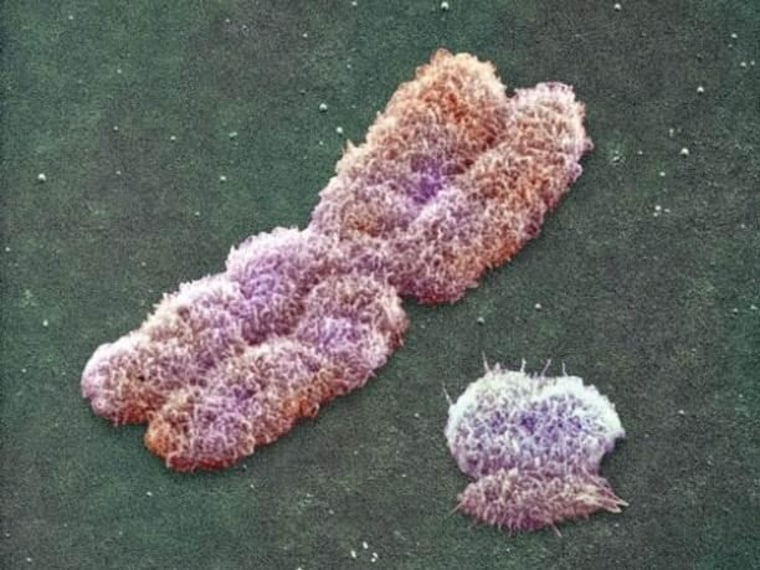Men have lost most of the genes originally included on the Y chromosome during evolution, but those genes essential for survival have persevered, new research finds.
Many of the remaining Y chromosome genes appear to have little if any role in determining gender or producing sperm, but rather are active throughout the body and may contribute to differences between men and women with certain diseases, researchers said.

The human sex chromosomes, X and Y, evolved over the past 300 million years from the other, non-sex chromosomes. The X chromosome kept 98 percent of its genes, but the Y chromosome went through genetic decay, shedding all but 3 percent of its genes.
In a new study in the journal Nature, scientists reconstructed the evolution of the Y chromosome in humans and seven other mammals to find if chance was involved in deciding which genes survived, or if something set these genes apart from those lost during evolution.
Results showed that the surviving genes are expressed in many more tissues throughout the body than the genes that didn't survive. For an organism to survive, many of these genes must pair with their corresponding copies on the X chromosome. In other words, it would have been fatal for the organism to lose the Y-copy of these genes, according to the study.
One gene on the Y chromosome determines gender: its expression triggers the formation of the testis, which produce sperm and sex hormones. These hormones give rise to other male traits, such as a muscular body and deep voice. However, researchers say this is only one part of what the Y chromosome does.
Many diseases occur at different rates in men and women, but are not fully explained by sex differences. For example, autism is more common among boys than girls, whereas autoimmune diseases are more frequent among women.
"All of the myriad differences between human males and females — from anatomy to disease susceptibility — arise from differences in the genes of the X and Y chromosomes," the study's authors wrote.
- Bahar Gholipour, Live Science
This is a condensed version of a story that appeared on Live Science. Find the original here. Email Bahar Gholipour or follow her @alterwired. Follow us @LiveScience, Facebook & Google+.
- Men vs. Women: Our Key Physical Differences Explained
- 7 Diseases You Can Learn About From a Genetic Test
- Unraveling the Human Genome: 6 Molecular Milestones
Copyright 2014 LiveScience, a TechMediaNetwork company. All rights reserved. This material may not be published, broadcast, rewritten or redistributed.